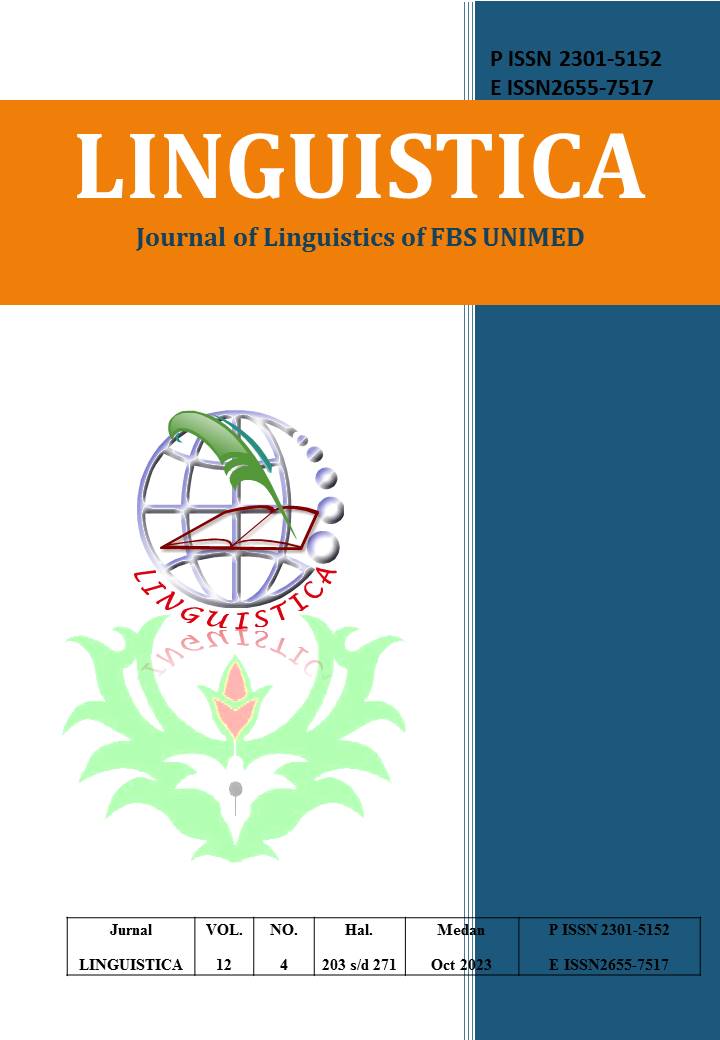LANGUAGE STYLES USED IN FABRIZIO ROMANO™S INSTAGRAM ACCOUNT
DOI:
https://doi.org/10.24114/jalu.v12i4.52491Abstract
This thesis examines the types, the used and the reasons why language styles used in Fabrizio Romano on his Instagram account, using Martin Joos's theory and a qualitative descriptive method. There are five styles proposed in Joos theory. The source of data is Instagram and there were 50 captions founds as the data. Those captions in Fabrizio™s instagram were analyzed in order to classify them into their own styles. This study reveals that Fabrizio Romano uses four of five language styles in his Instagram captions: formal style (26%), casual style (40%), consulatative style (14%), and intimate style (20%). Each style has a distinct tone and communication style, with formal style indicating a formal tone and proper nouns, casual style using conversational expressions, contractions, or shortening, and consulatative style asking for advice or predictions. Intimate style conveys personal sentiments and emotions, highlighting joy and enthusiasm, and is addressed to followers based on events. The choice of language style is deliberate, with formal language maintaining professionalism and credibility, while casual and consulatative styles foster engagement and inclusivity among a diverse audience. Incorporating intimate style allows for a personal connection with followers and a sense of authenticity. Overall, these language styles work together to enhance the overall experience and success of Fabrizio Romano's Instagram account.Downloads
Published
2023-10-31
Issue
Section
Articles
License
Copyright (c) 2023 MARCELINO HASIHOLAN SARUMPAET, MORADA TETTY

This work is licensed under a Creative Commons Attribution-ShareAlike 4.0 International License.
Authors who publish with this journal agree to the following terms:
- Authors retain copyright and grant the journal the right of first publication with the work simultaneously licensed under a Creative Commons Attribution License that allows others to share the work with an acknowledgment of the work's authorship and initial publication in this journal.
- Authors are able to enter into separate, additional contractual arrangements for the non-exclusive distribution of the journal's published version of the work (e.g., post it to an institutional repository or publish it in a book), with an acknowledgment of its initial publication in this journal.
- Authors are permitted and encouraged to post their work online (e.g., in institutional repositories or on their website) prior to and during the submission process, as it can lead to productive exchanges, as well as earlier and greater citation of published work (See The Effect of Open Access).
- This work is licensed under a Creative Commons Attribution-ShareAlike 4.0 International License.

